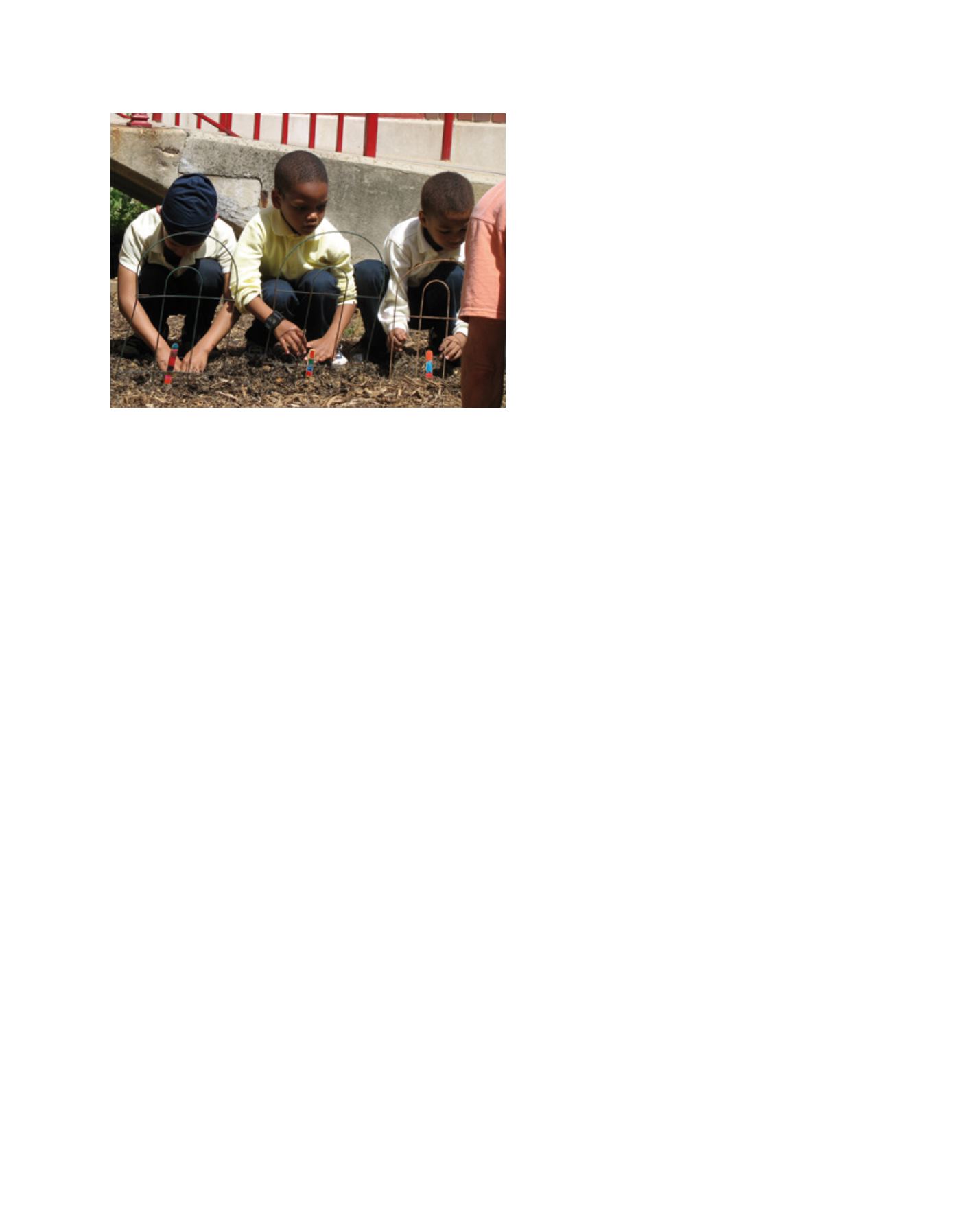

[
] 174
Earth Scouts, takes a powerful model – the Boy and Girl Scouts –
and updates it for life on a finite planet, putting ecological citizenship
at the very heart of the training and philosophy of the organization.
22
Increasing resources and community support for this type of organ-
ization could help give children more opportunities to experience
the outdoors and better understand the importance of their role as
ecological stewards, while also providing exercise, more opportunities
to build friendships and community cohesion.
Sustainability in formal education
Finally, as important as restructuring time out of school, is restructuring
time in school, so that all aspects of formal education reinforce sustain-
ability. Transforming school lessons goes far beyond what is taught in
classrooms, but to succeed, it will need to include all aspects of the school
day, from lunch and recess, to even the very commute to school.
In many countries of the world, people commute to school in a bus
or car, rather than on foot or bike. But some towns are proactively
changing this. The town of Lecco in Italy, for example, replaced its
school buses with ‘walking buses’, and today the town’s 450 elemen-
tary school students walk with parents and volunteer ‘drivers’ to their
ten different schools.
23
Along with preventing over 160,000 kilome-
tres of driving (and the resultant pollution) since their creation in
2003, these walking buses have played an important part in teaching
road safety, providing exercise and connecting children to nature.
24
In the classroom, teachers will need to prioritize sustainability in
their lessons. First and foremost, this will mean tackling business-
sponsored teaching materials that can subtly spread a company’s
agenda. School teachers, too often starved of resources, end up
taking the materials that are available.
25
Finding revenue to provide
materials will be an important way to prevent this.
Beyond this will be the more comprehensive effort to integrate
environmental literacy throughout all courses – language, maths,
sciences, social studies and so on – rather than relegating it to one
elective course in school, as is so often the case today. Moreover,
as the media are so influential, special care should be made to inte-
grate media literacy into school courses. The good news is that there
are now efforts in a number of countries, and by UNESCO as well,
to accelerate media literacy programming in schools – efforts that
will hopefully grow during the coming years, as over USD640 billion
continues to be spent on advertising every year, making
increasing media literacy essential.
26
Outside of the classroom, particularly in the school play-
ground, schools can benefit significantly from the creation
of school gardens. These gardens (and community gardens
beyond the school walls) can play a powerful part in recon-
necting children to the natural cycles of Earth, and give
them a deeper understanding of their dependence on the
planet for their survival. Plus, gardens can provide exercise
and a direct connection with healthy foods (andmore will-
ingness to eat them). Research has also found that time in
gardens improves mental well-being.
27
Finally, gardening
provides an important skill –one that in the future may be
very valuable as the consumer economy butts against the
limits of planet Earth and more people return to farming
for their livelihoods.
28
One important part of the school day that is often
ignored is lunch. Eating habits are learned from early
childhood and providing high-fat, high-sugar foods to
children sets them up not just for increased levels of
childhood obesity, but also for a lifetime of unhealthy
eating. The good news is that all around the world,
school systems are working to shift the menus to healthy,
local, sustainable foods. Rome is leading the way, with
its cafeterias now providing meals to the city’s 150,000
students with ingredients that are now more than two-
thirds organic, 26 per cent local and 14 per cent fair
trade.
29
While few cities are that advanced, many are
starting to tackle this difficult issue. Even Washington,
D.C. recently banned flavoured milks in the city’s school
cafeterias, which is a good sign for the US capital.
30
Finally, while working on enhancing childhood
experience, we must remember that addressing child-
hood without addressing the other stages of life will
reduce the odds of success dramatically. While working
to change the media’s messages to children, we also
need to address media messages to all citizens. While
adjusting elementary school curricula, extracurricu-
lar activities and museum priorities, we also need to
work on the teaching priorities of all levels of school-
ing – from nursery all the way up to university and
professional schools.
Imagine if doctors were taught how to prevent illness
by teaching patients how to live healthily, or future busi-
ness leaders were taught that a good business maximizes
social well-being, not simply profit. And at the same
time, imagine if TV commercials reminded people to eat
their vegetables, and magazines like Fortune celebrated
the Top 100 Business Leaders each year not by meas-
uring their company’s earnings but by how much good
their businesses did that year. Education can be a central
tool to persuade our cultures to focus on sustainability,
but only with significant commitment from educational
leaders and support by policymakers and media leaders
to support this shift. Only when we can reorient all of
these powerful institutions can we hope to live in a
culture where living sustainably feels as natural as living
as a consumer feels today, and only then can we ensure
a sustainable and secure future for humanity.
Young students plant a vegetable garden at their elementary school in Washington, D.C.
Image: Earth Sangha
















